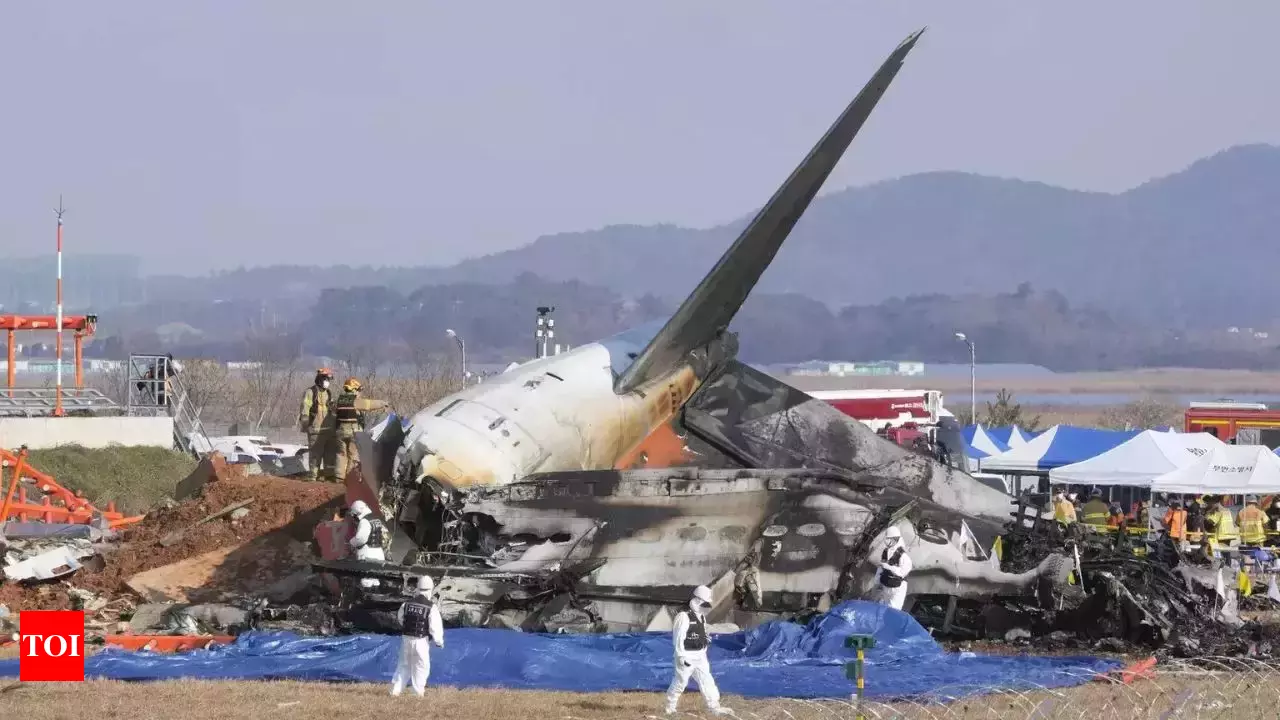A recent crash involving a Delta Air Lines flight from Minneapolis to Toronto marks the latest in a string of aviation disasters, but what exactly is behind the concerning trend?
Monday’s crash is at least the fourth major aviation mishap in North America in the past month.
The spate of recent aviation incidents and close calls have people worried about the safety of flying.
Here’s what we know so far:
Recent aviation incidents
In addition to Monday’s Toronto crash, at least three other major crashes have been reported so far in 2025.
A commercial jetliner and an Army helicopter collided near the nation’s capital on Jan. 29, killing 67 people. The collision was the deadliest plane crash in the U.S. since 2001, when a jet slammed into a New York City neighborhood just after takeoff, killing all 260 people on board and five more on the ground.
A medical transportation plane crashed in Philadelphia on Jan. 31, killing the six people onboard and another person on the ground. That Learjet generated a massive fireball when it smashed into the ground in a neighborhood not long after taking off from a small airport nearby.
Earlier this month, 10 were killed in a plane crash in Alaska when a commuter flight crashed on Alaska sea ice.
Some smaller incidents, including multiple at O’Hare International Airport, have also been reported.
Most recently, a United flight departing from Chicago was forced to return to O’Hare Airport for an unexpected issue in the cockpit. Before that, a plane’s wing struck an aircraft tug at the airport, critically injuring the vehicle’s driver, authorities said.
There was also a Japan Airlines plane that clipped a parked Delta plane while it was taxiing at the Seattle airport and a United Airlines plane caught fire during takeoff at the Houston airport after an engine problem sparked a fire on the wing.
That’s not even to mention the security concerns that arose after stowaways were found dead inside the wheel wells of two planes and aboard two other flights. And a passenger opened an emergency exit door on a plane while it was taxiing for takeoff in Boston.
Cause of the crashes
The National Transportation Safety Board and Federal Aviation Administration are investigating these recent crashes and close calls to determine what caused them and look for ways to prevent similar incidents.
There have already been troubling revelations about the midair collision, but it will take more than a year to get the full report on what happened.
Washington D.C.
The crew of the Army helicopter that collided in midair with the American Airlines jet near Washington, D.C.’s Ronald Reagan National Airport may have had inaccurate altitude readings in the moments before the crash, and also may not have heard key instructions from air traffic controllers to move behind the plane, investigators said last week.
National Transportation Safety Board Chairwoman Jennifer Homendy told reporters that the recording from the Black Hawk helicopter cockpit suggested an incomplete radio transmission may have left the crew without understanding how it should shift position just before the Jan. 29 crash, in which all 67 aboard the two aircraft were killed.
“That transmission was interrupted – it was stepped on,” she said, leaving them unable to hear the words “pass behind the” because the helicopter’s microphone key was pressed at the same moment.
The helicopter pilots may have also missed part of another communication when the tower said the jet was turning toward a different runway, she said.
It will take more than a year to get the final NTSB report on the collision, and Homendy warned reporters that many issues were still being probed.
“We’re only a couple weeks out,” from the crash, she said. “We have a lot of work to do.”
Philadelphia
Carrying six people from Mexico, including a child who spent months in treatment at a hospital, the Learjet 55 went down just after departing from the Northeast Philadelphia Airport, creating what witnesses described as a massive fireball, shaking houses and leaving a chaotic street scene.
Authorities couldn’t yet say why the jet crashed.
The Learjet took off from Northeast Philadelphia Airport, which primarily serves business jets and charter flights.
Audio recorded by LiveATC captured an air traffic controller telling “Medevac Medservice 056” to turn right when departing. About 30 seconds later, the controller repeats the request before asking, “You on frequency?” Minutes later the controller says, “We have a lost aircraft. We’re not exactly sure what happened, so we’re trying to figure it out. For now the field is going to be closed.”
Alaska
The cause of the crash is still under investigation; the death toll of 10 makes it one of the deadliest plane crashes in the state in 25 years.
Alaska’s varied terrain — ranging from mountains and glaciers to lakes, thick forests and seemingly endless tundra — can make flying challenging. But so, too, can rapidly changing weather conditions. Microclimates in some areas mean the weather at an airport, for example, can be much different than conditions just miles away.
“You have really rough weather in Alaska. If you need good weather information in any place in the 50 states, you need it in Alaska,” U.S. Transportation Secretary Sean Duffy said, adding that reliable telecommunications systems are also critical. He pledged to work with the state’s congressional delegation and other federal agencies on a plan to further improve aviation safety.
Toronto
The cause of the incident remains unclear. The Transportation Safety Board of Canada will be in charge of the investigation, according to the FAA.
While it wasn’t immediately clear if weather played a role, the incident occurred amid continued snowfall in the region and follows back-to-back winter storms.
An audio recording from the tower at Toronto Pearson International Airport shows the flight was cleared to land at about 2:10 p.m. local time. The tower warns the pilots of a possible air flow bump in the glide path as the plane comes into land because of a preceding aircraft in front of it.
“It’s very rare to see something like this,” said John Cox, CEO of aviation safety consulting firm Safety Operating Systems in St. Petersburg, Florida. “We’ve seen a couple of cases of takeoffs where airplanes have ended up inverted, but it’s pretty rare.”
Cox, who flew for U.S. Air for 25 years and has worked on NTSB investigations, said the CRJ900 aircraft is a proven aircraft that’s been in service for decades and does a good job of handling inclement weather.
“The weather conditions were windy. The wind was out of the west at 27 to 35 knots, which is about 38 miles an hour. So it was windy. But the airplanes are designed and certified to handle that. The pilots are trained and experienced to handle that.”
FAA changes
On Monday, reports indicated the Trump administration had begun firing several hundred Federal Aviation Administration employees, upending staff on a busy air travel weekend.
The National Air Traffic Controllers Association said in a brief statement Monday it was “analyzing the effect of the reported federal employee terminations on aviation safety, the national airspace system and our members.”
The firings hit the FAA when it faces a shortfall in controllers. Federal officials have been raising concerns about an overtaxed and understaffed air traffic control system for years, especially after a series of close calls between planes at U.S. airports. Among the reasons they have cited for staffing shortages are uncompetitive pay, long shifts, intensive training and mandatory retirements.
Still, some Democrats have sounded alarms.
Sen. Maria Cantwell, a top Democrat on the Commerce Committee, which oversees the FAA, posted on X shortly after the Toronto crash that “now is not the time to fire technicians who fix and operate more than 74,000 safety-critical pieces of equipment like radars, navigational aids, and communications technology.”
“The FAA is already short 800 technicians and these firings inject unnecessary risk into the airspace — in the aftermath of four deadly crashes in the last month. The FAA’s safety workforce needs to be a priority for this Administration,” she wrote.
The U.S. Department of Transportation said in a statement Monday, however, the “the FAA continues to hire and onboard air traffic controllers and safety professionals, including mechanics and others who support them.”
“The agency has retained employees who perform safety-critical functions,” the statement read.
How worried should I be?
Fatal crashes attract extraordinary attention partly because they are rare. The track record of U.S. airlines is remarkably safe, as demonstrated by the long stretch between fatal crashes.
But deadly crashes have happened more recently elsewhere around the world, including one in South Korea that killed all 179 people aboard in December. There were also two fatal crashes involving Boeing’s troubled 737 Max jetliner in 2018 and 2019. And last January, a door plug blew off a 737 Max while it was in flight, raising more questions about the plane.
And federal officials have been raising concerns about an overtaxed and understaffed air traffic control system for years, especially after a series of close calls between planes at U.S. airports. Among the reasons they have cited for staffing shortages are uncompetitive pay, long shifts, intensive training and mandatory retirements.
President Donald Trump added to those concerns when he blamed the midair collision on the “obsolete” air traffic control system that airports rely on and promised to replace it.
But even with all that, Transportation Secretary Sean Duffy went on Fox News and tried to assure viewers that air travel is “way safer than traveling in a car and train. This is the safest mode of transportation.”
And the statistics back that up.
The National Safety Council estimates that Americans have a 1-in-93 chance of dying in a motor vehicle crash, while deaths on airplanes are too rare to calculate the odds. Figures from the U.S. Department of Transportation tell a similar story.















